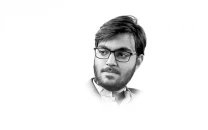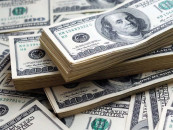Missile exchanges between Pakistan and Iran
Having aided its proxies in Gaza, Lebanon, and Yemen, Iran decided to expand area of its conflict

Having aided its proxies in Gaza, Lebanon and Yemen, Iran decided to expand the area of its conflict by attacking posts in three countries, that are, to varying degrees, friendly to it: Syria, Iraq and Pakistan. The three attacks were in response to what the Islamic Republic believed were hostile activities that originated with the targeted countries. The Iranian attack on Syria was in response to the suicide bombings that killed nearly 100 people in Kerman, a city in Iran. Iran and its proxies had spent years battling the Islamic State terrorist group in Syria and Iraq, mostly known by its acronym, ISIS. Syrian president Bashar al-Assad has relied heavily on Iran to fight the ISIS. Other countries have also targeted the ISIS: the United States, Israel and Turkey have dropped great amounts of explosives in the name of fighting terrorism.
The attack on Erbil in Iraq was to punish Israel for its many assaults on the regime in Iran. General Amirali Hajizadeh, the commander of the Revolitionary Corps Aerospace Forces who commanded the Iranian attacks, told state television on January 16 that Israel’s covert attacks on Iran’s nuclear facilities and the assassination of its nuclear scientists were planned from a facility in Erbil, capital of Iraqi Kurdistan region. That was the reason that Erbil was struck. “We had to confront this and retaliate against the blood of our martyrs,” said the general.
The attack on Pakistan was on a position in the restive province of Balochistan. On January 16, 2024, it fired its missiles to hit what it said was a camp that trained Sunni extremists operating under the name if Jaish al-Adl to attack positions in Iran’s border with Pakistan. The group had struck a police station in southeastern Iran killing 11 officers in Rask, a town in southeastern Iran, near the border with Pakistan.
Pakistan has, in turn, accused Iran of supporting separatists in Balochistan. This was not the first time Iran had struck Pakistan. In 2021, Iran retrieved two of its soldiers who were being held hostage by Jaish al-Adl. Established in 2012, the group emerged from the remnants of Jundallah, a Sunni militant organisation that lost some of its strength after Iran captured and executed its leader Abdolmalik Rigi in 2010.
In 2017, Pakistani Air Force shot down an Iranian drone. Over the years, both Iran and Pakistan have accused each other of sheltering militants along their shared 559-mile border. Ahmed Quraishi, an Islamabad-based analyst who focuses on the Middle East, was of the view that he didn’t think, “Pakistanis can afford to let this incident pass without a response. But retaliation, whenever it happens, will be swift and will maintain an element of surprise.” This is what actually occurred.
Iran’s strategy was to strike what it viewed as its enemies at will. “We are a missile power,” Iran’s Defence Minister Mohammad Raza Ashtiani told reporters after a cabinet meeting. “Where they want to threaten the Islamic Republic of Iran, we will react, and the reaction will definitely be proportionate, tough and decisive.” According to Vivin Yee and Farnaz Fassihi, writing for The New York Times, “Iran’s show of strength was meant to reassure domestic conservatives and militant allies abroad, and to warn Israel, the United States and terrorist groups that Iran will strike back if attacked. Supporters of Iran’s authoritarian clerical regime have been incensed by recent attacks on their country and made it appear vulnerable. There was demand for a powerful response.”
Although the foreign ministers of Pakistan and Iranian had spoken on the telephone, Islamabad went ahead and retaliated for Tehran’s missile attack. It struck on January 18, two days after the Iranian missile operation. Pakistan used, said an official statement from Islamabad, “drones, rockets, loitering munitions and standoff weapons.” Both sides said they had targeted separatist militant groups that pose cross-border threats. The actions taken by the two countries against each other did not seem to be connected with the escalating conflict involving Israel and Hamas. The Palestinian group, Hamas, has been supported by Iran as were two other militant groups, Hezbollah based in Lebanon and the Houthis that run the government from Sanna, the Yemeni capital.
Following the strike on Pakistan by Iran, Tehran’s Foreign Minister Hossein Amir-Abdollah said that his country “only targeted Iranian terrorists in the soil of Pakistan” and not Pakistani citizens. “We don’t allow our national security to be compromised and to be played with, and we have no reservations, no hesitation, when it comes to our national interests.” In explaining its response, Islamabad used words similar to those in which Tehran cast its action against the group in Pakistan. China that had actively courted Pakistan and Iran seemed to have been drawn into the dispute. It worried that its multi-billion-dollar investment in building a corridor that would connect the port of Gwadar on the Balochistan coast with its western region of Xinjiang could be hurt if the war against the Houthis affects shipping in the Persian Gulf and the Baloch dissidents on both sides of the Iran-Pakistan border could make it difficult to use the corridor.
Having exchanged fire, both Islamabad and Tehran were anxious to deflate the conflict. Statements were issued by both capitals emphasising that the two countries had had friendly relations for decades and they would go back to that situation. But the missile strikes served one important function for the government in Iran. It drew focus to the rapidly developing and increasing sophistication of Tehran’s weapons programme. Unveiled in 2022, the Kheibar Shekan is a solid-propellant precision guided missile that has a range of 1,450 kilometers. The range is long enough for Iran to target Israel. As Lara Jakes and Devid E Sanger wrote in The New York Times, “the range and apparent accuracy drew the attention of national security officials in Europe and Israel, as well as outside experts who track Iran’s technological advances.”
Iran has come a long way since it built up its arsenal made up of Scud missiles obtained from Libya and North Korea during the 1980s. The current programme makes missiles a vital part of the military and is the reason why Tehran’s defence budget ranks as the world’s tenth largest in 2022 according to the Institute for International Studies.
Published in The Express Tribune, January 29th, 2024.
Like Opinion & Editorial on Facebook, follow @ETOpEd on Twitter to receive all updates on all our daily pieces.
















COMMENTS
Comments are moderated and generally will be posted if they are on-topic and not abusive.
For more information, please see our Comments FAQ